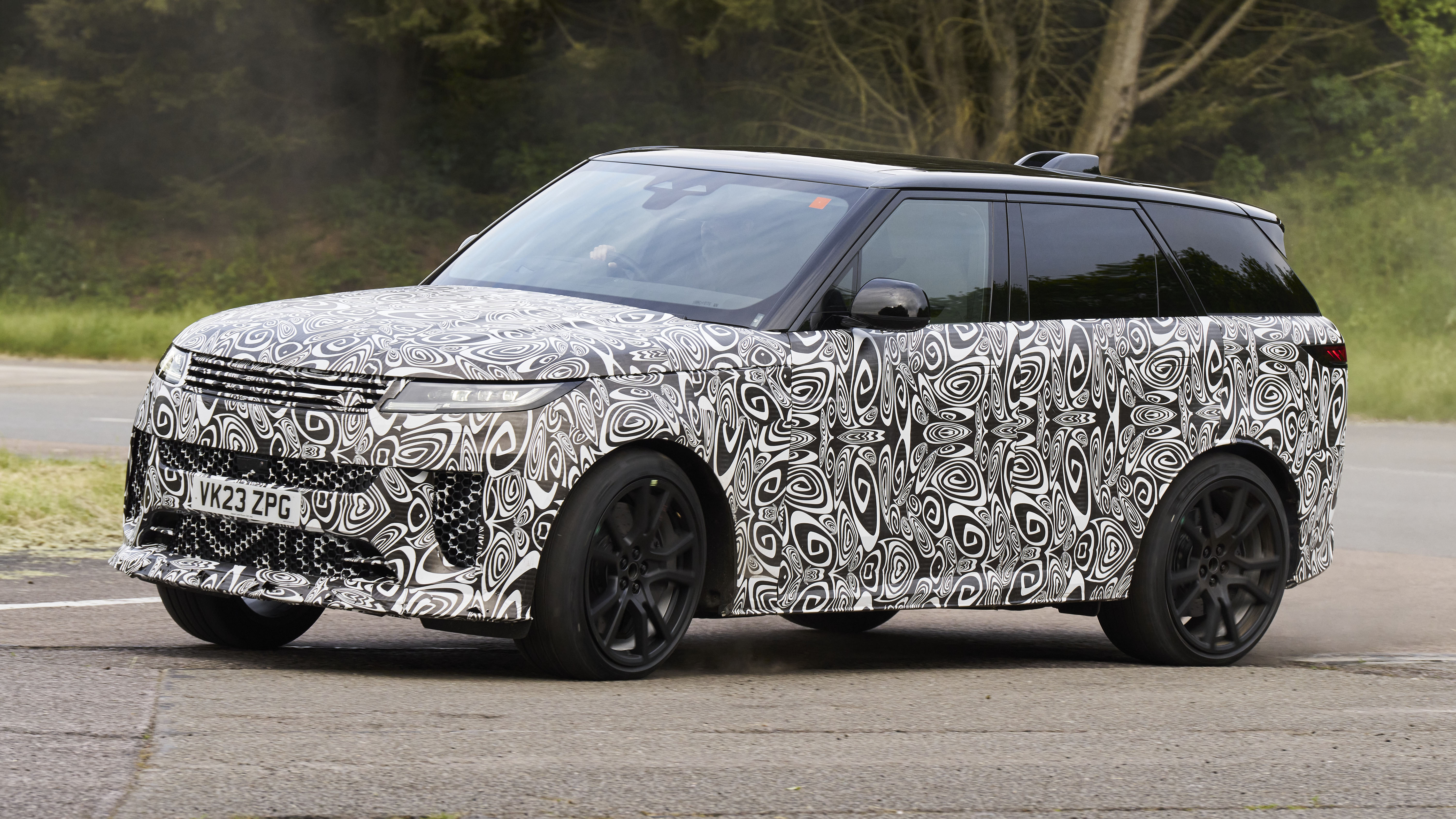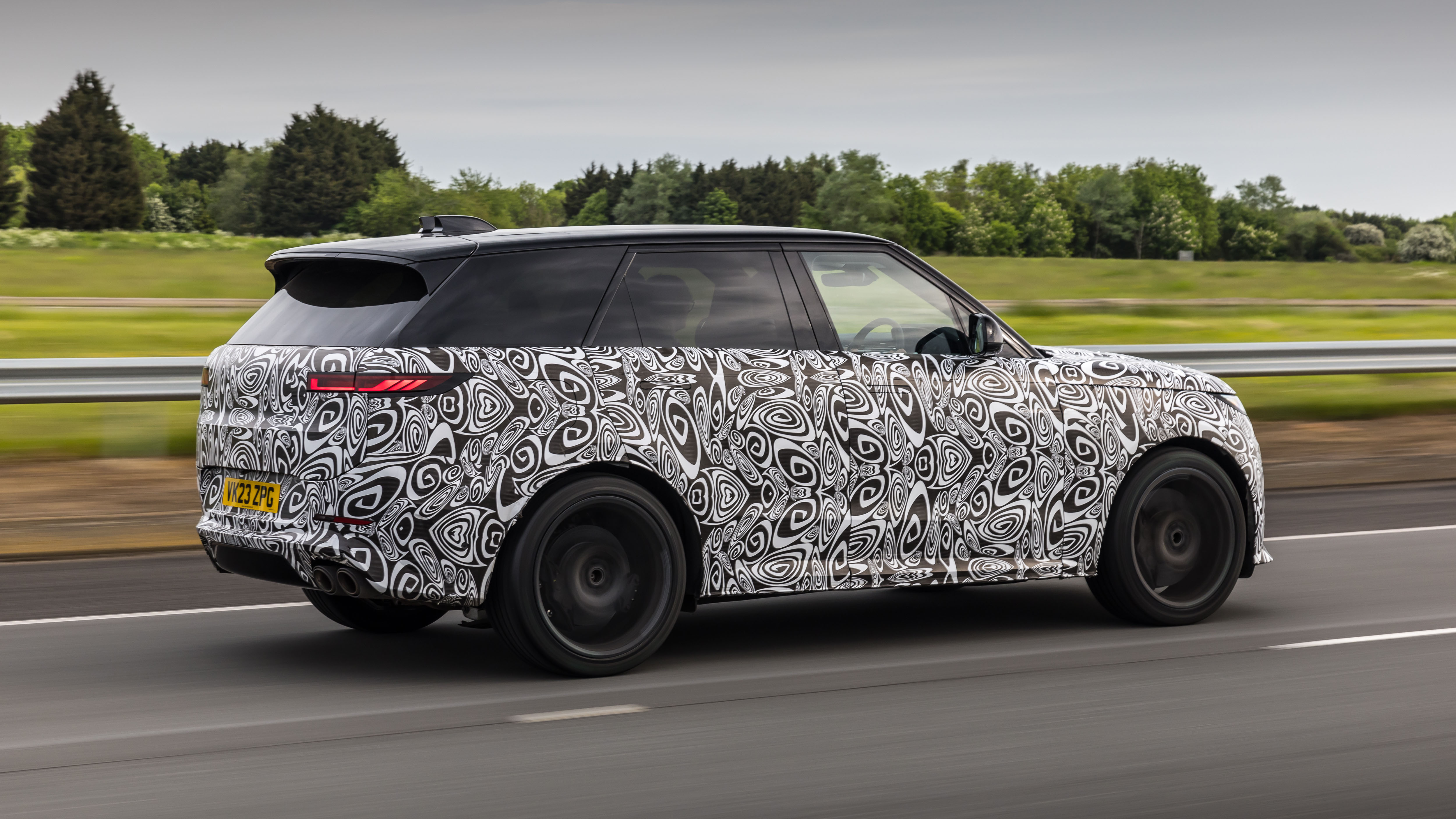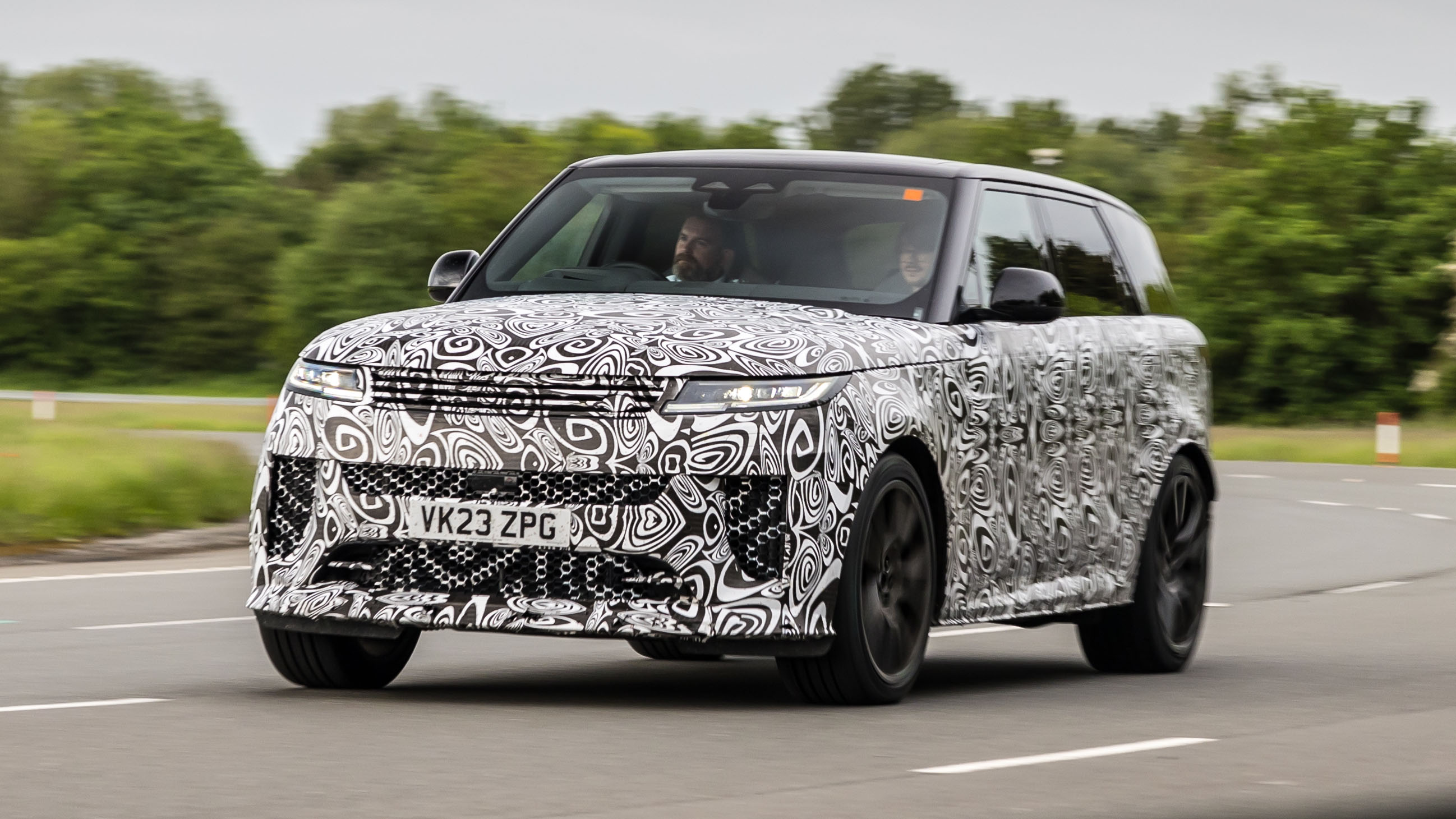
Bellowing V8 meets flat cornering: a ride in the 626bhp Range Rover Sport SV
RR reckons this turbocharged V8 land yacht has grown up since the last fire-breathing outing. Time to find out
Outwardly, the new Range Rover Sport SV presents a more refined, dignified face to the world. Inwardly, that’s not the case. All the V8 thunder and roar of the old car remains. Range Rover knows its SVR audience, believes they’re not yet ready for a hybrid so has given the people what they want: a socking great 626bhp turbocharged V8.
Experienced from the passenger seat, it initially seems very much business as usual despite the fact this is a new engine. Gone is the old, terrifyingly thirsty 5.0-litre supercharged V8, replaced by a 4.4-litre that’s added over 50bhp, yet reduced emissions by 15 per cent. It’s not Range Rover’s own work, but comes from BMW, where it’s already done sterling work in the biggest M cars.
It’s a harder hitting, more potent engine. Being supercharged, the old one had great mid-range throttle response, but never pulled as hard and fast as this one at the top end. The 2,560kg RRS SV is a very, very heavy car, yet this 590lb ft 4.4 makes mincemeat of it. It leaps when prodded and, now equipped with Launch Mode, hurls itself to 62mph in 3.6secs. But the fury of the acceleration feels broadly familiar. Sure, it’s faster than before, but the sounds and sensations are familiar. It’s what happens when you get to a corner that’s new.
We’re on Range Rover’s test track at Gaydon and Ross Restell, SVO’s vehicle dynamics manager is in charge of showing the SV off. A long, long, fast left-hander is the most revealing. Where the old car would prove a blunt instrument, quickly losing grip and lunging into clumsy understeer with tyres squealing, the new one is transformed. It remains uncannily level and grips hard way beyond the point you expect it to give up.
This is not a new trick – it’s performed by various rivals from the Porsche Cayenne and Lambo Urus to BMW’s own X5M. But what’s different here is that the new RRS SV feels at heart, a softer car than them. It’s not so completely focused on performance and agility. And yet, when pushed, it copes.
There’s a reason why. All of its aforementioned rivals use an active electric roll control system that torques the anti-roll bar to prevent these tall cars from lurching and leaning. It’s a clever system and is what all performance SUVs have to thank for their surprising dynamism. The SV takes that technology one step further. Instead of using the anti-roll bars (which it has binned altogether), it features cross-linked hydraulic dampers. Turn left and fluid is pumped from front left to rear right and rear left to front right to keep the car level.
That’s the system at its most basic. As Restell demonstrates, it allows a little roll and movement just so the driver is aware the car’s working. Under braking there’s a little dive, but again, fluid is pumped from the rear to the front to support it. You get the feeling the chassis has got the measure of the weight and power being inflicted on it.
Compared to a 48V active anti-roll bar capable of applying around 1500Nm of torque, the hydraulics deliver the equivalent of 2300Nm in cornering and 4000Nm under dive. On standard-fit all-season tyres (admittedly pretty chunky with 285-width fronts and 305s at the back), the claim is the SV can pull 1.1g through corners.
Figures are all well and good, but even from the wrong side of the car it’s the SV’s new found driving sophistication that’s the stand out. It used to be a roaring blunderbuss, now it charges with control, but still makes all the right noises. It remains to be seen if the brakes (especially the optional 440mm Brembo carbon ceramics) can cope. Worried about that? Try reducing the unsprung mass by speccing the (also optional) 23-inch carbon wheels, saving 35.6kg.
Carbon weight saving and toned down looks. They suggest that the new SV has grown up, adopted a new attitude. It hasn’t. Range Rover knows its clientele, and realises you’ll have to pry the V8 out of their cold, dead hands. Yes, that makes the SV a missed opportunity. But it’s also likely to make for a prettier bottom line on the balance sheet. Range Rover has chosen to give the audience what they want, but added in something they didn’t know they needed: a level of ability and control that’s entirely new.
Top Gear
Newsletter
Thank you for subscribing to our newsletter. Look out for your regular round-up of news, reviews and offers in your inbox.
Get all the latest news, reviews and exclusives, direct to your inbox.
Trending this week
- Car Review
BMW iX3










